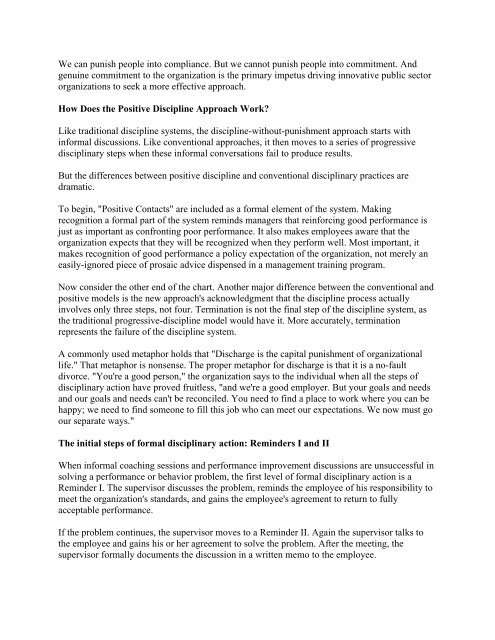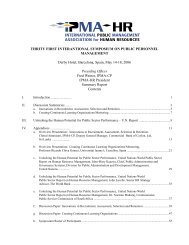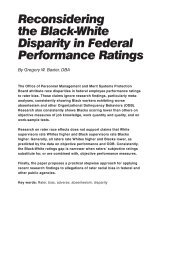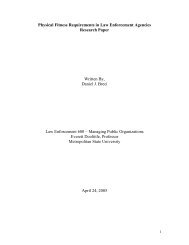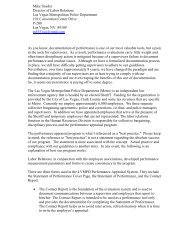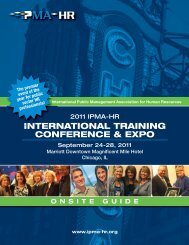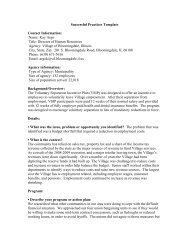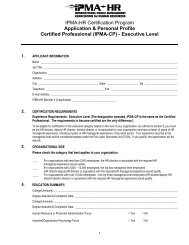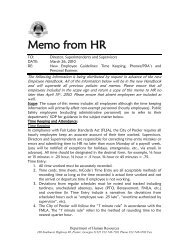Public Sector Organizations: Today's Innovative Leaders In ... - IPMA
Public Sector Organizations: Today's Innovative Leaders In ... - IPMA
Public Sector Organizations: Today's Innovative Leaders In ... - IPMA
- No tags were found...
Create successful ePaper yourself
Turn your PDF publications into a flip-book with our unique Google optimized e-Paper software.
We can punish people into compliance. But we cannot punish people into commitment. Andgenuine commitment to the organization is the primary impetus driving innovative public sectororganizations to seek a more effective approach.How Does the Positive Discipline Approach Work?Like traditional discipline systems, the discipline-without-punishment approach starts withinformal discussions. Like conventional approaches, it then moves to a series of progressivedisciplinary steps when these informal conversations fail to produce results.But the differences between positive discipline and conventional disciplinary practices aredramatic.To begin, "Positive Contacts" are included as a formal element of the system. Makingrecognition a formal part of the system reminds managers that reinforcing good performance isjust as important as confronting poor performance. It also makes employees aware that theorganization expects that they will be recognized when they perform well. Most important, itmakes recognition of good performance a policy expectation of the organization, not merely aneasily-ignored piece of prosaic advice dispensed in a management training program.Now consider the other end of the chart. Another major difference between the conventional andpositive models is the new approach's acknowledgment that the discipline process actuallyinvolves only three steps, not four. Termination is not the final step of the discipline system, asthe traditional progressive-discipline model would have it. More accurately, terminationrepresents the failure of the discipline system.A commonly used metaphor holds that "Discharge is the capital punishment of organizationallife." That metaphor is nonsense. The proper metaphor for discharge is that it is a no-faultdivorce. "You're a good person," the organization says to the individual when all the steps ofdisciplinary action have proved fruitless, "and we're a good employer. But your goals and needsand our goals and needs can't be reconciled. You need to find a place to work where you can behappy; we need to find someone to fill this job who can meet our expectations. We now must goour separate ways."The initial steps of formal disciplinary action: Reminders I and IIWhen informal coaching sessions and performance improvement discussions are unsuccessful insolving a performance or behavior problem, the first level of formal disciplinary action is aReminder I. The supervisor discusses the problem, reminds the employee of his responsibility tomeet the organization's standards, and gains the employee's agreement to return to fullyacceptable performance.If the problem continues, the supervisor moves to a Reminder II. Again the supervisor talks tothe employee and gains his or her agreement to solve the problem. After the meeting, thesupervisor formally documents the discussion in a written memo to the employee.


